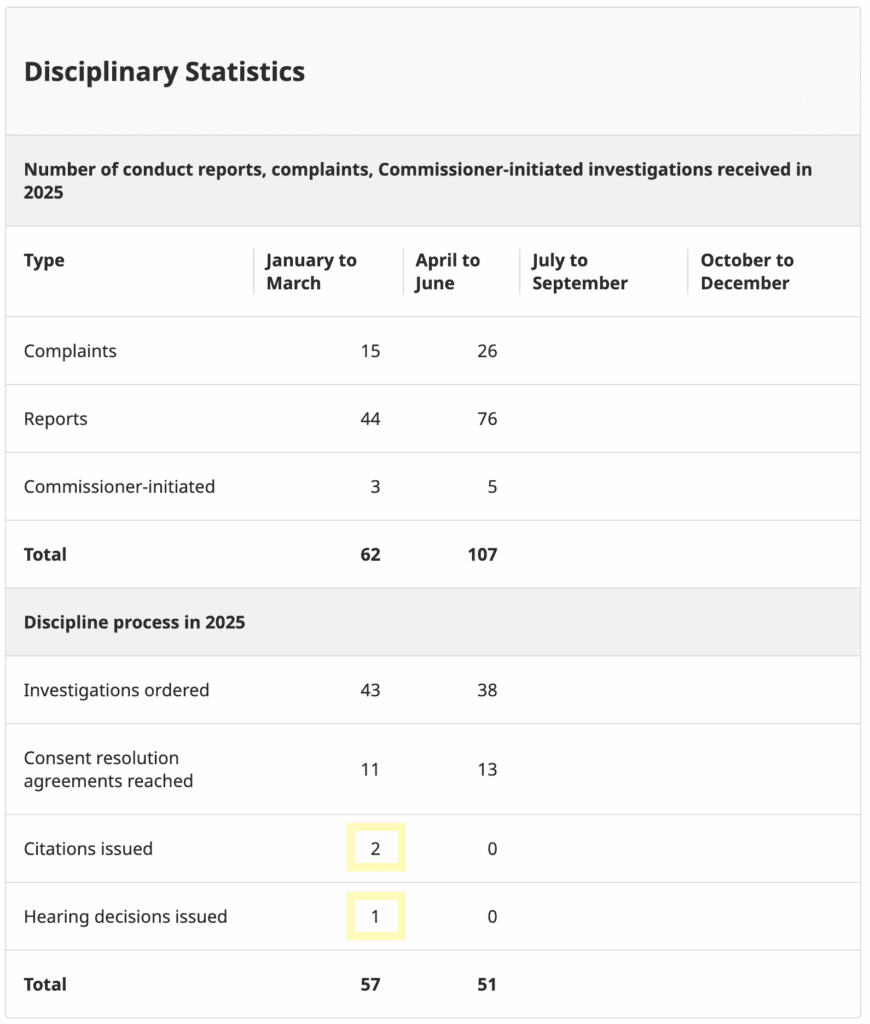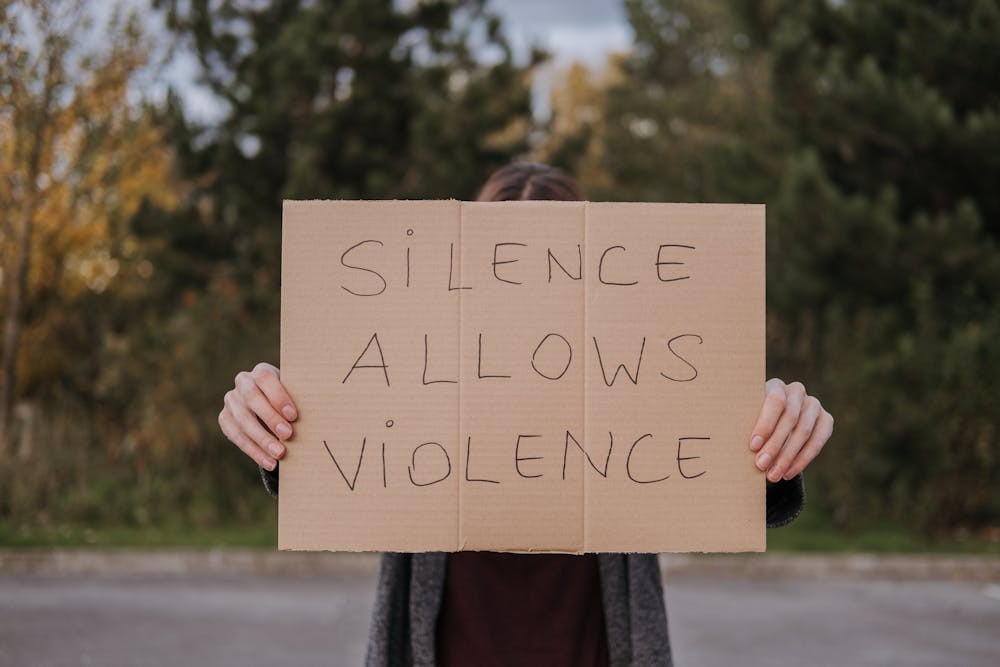It’s time to riot in the streets. We have tried everything else and our children are still being hurt. The existing systems of appeal and escalation are ineffective, more focused on preserving the institution than delivering justice. It’s time to end the engineered scarcity in our public education system.
The maze of ineffective complaint avenues
Parents who enter the labyrinth of British Columbia’s public school complaint processes often find themselves led in circles by design, encountering dead ends at every turn and no genuine relief for their children’s harm.
A caregiver begins at their child’s classroom door, reporting a serious concern – perhaps a bullying incident, a denied learning accommodation, or even misconduct by a teacher – only to be met with polite nods and minimal action.
Escalating the issue up the chain merely shifts the setting, not the outcome: the school principal might promise to “look into it,” a district official might convene a meeting, but substantive resolution remains elusive. In the largest school districts, these internal channels have hardened into a defensive maze, structurally predisposed to protect the institution over the student.
-
She graduated and this is what she learned
On raising a badass advocate, unintentionally. I didn’t set out to raise an advocate—I set out to raise a child. A child who might feel safe in her body and steady in her breath, who might look out at the world and feel…
Section 11 Appeals
A formal complaint to the district is typically investigated by the district itself, resulting in predictable self-exoneration – for example, one family’s complaint in Surrey was duly “investigated” only to be deemed unsubstantiated by the very school authorities in question wltribune.com.
The pattern is painfully clear: when schools police their own behaviour, no significant fault is ever officially found. The process serves to mollify the parent with procedure while the status quo emerges unscathed.
When a parent appeals beyond the school administration to the elected Board of Education, the facade of accountability only grows thicker. Under Section 11 of the School Act, parents ostensibly have the right to appeal a staff decision to the board, and boards must respond within 45 days speakingupbc.com.
But this “right” is more procedural than empowering. By the time a grievance reaches the trustees, the district’s narrative has been carefully manicured, and the board tends to close ranks. In practice, trustees often behave less like representatives of the public interest and more like additional layers of the bureaucracy.
-
The problem with the appeals process
When something goes wrong at school—when a child is excluded, harmed, or unsupported—families are told to “work it out with the school first.” That sounds reasonable on paper. But in practice, it’s vague, unstructured, and often retraumatising. I’ve gone through the Vancouver School…
If you ever manage to get an audience with the trustees—which is unlikely, as most districts require parents to climb multiple layers of delay and deference before that becomes possible—they will politely “hear” the appeal, allotting perhaps twenty minutes for a family to summarise years of advocacy, loss, and institutional betrayal, and then they will almost always uphold the original decision in a terse, carefully legalistic verdict that signals closure without ever offering justice.
In our case, despite exhausting every available step and lodging repeated protests through the official process, I was never permitted to present my case directly. I was told that the trustees had “reviewed the documentation,” but I was never shown what they were given, and I have no evidence that the people responsible for deciding my child’s fate ever even saw what I wrote.
Families who arrive at the board table seeking justice frequently leave feeling betrayed by the very governing body that should have championed them. Indeed, even contacting an individual trustee yields little; many school board members, citing protocol, will simply redirect parents back into the very administrative process that has already failed them rupertschools.ca. The result is a sense of hopelessness, as parents realise that every door in the house of local education authority leads back to the same windowless room of inaction.
-
Why families feel betrayed when they finally reach the school board
An editorial reflection and response to The Canary Collective’s July 29 post When families reach the end of their rope with a school—when they’ve tried everything they can think of and their child is still suffering—the next instinct is often to go higher. In…
Tokenism over transformation
On the rare occasions when determined parent advocacy forces some acknowledgment of a problem, the system’s response is nearly always tokenistic – a superficial change or minor accommodation designed to placate the immediate complaint without altering the entrenched culture or policy that caused it.
A student facing constant bullying might be shifted to a different class, but the anti-bullying policies and punitive culture of silence remain intact. A child with disabilities who was denied support may belatedly receive a few extra aide hours, but the district will not admit any broader failing nor commit to inclusive education reforms across all schools.
Teacher Regulation Branch
We have been reviewing outcomes of this process and the punishments are laughable—insulting in their symbolism, devastating in their implications. If a teacher’s conduct crosses a line and a parent dares to file a complaint with the Teacher Regulation Branch, any outcome is carefully managed, calibrated to preserve institutional reputation while appearing to resolve something.
The Teacher Regulation Branch—recently rebranded under the Ministry of Education as the Professional Conduct Unit—retains the authority, in theory, to discipline educators who breach professional standards. But in practice, discipline outcomes often unfold quietly through consent resolution agreements, private settlements, or confidential reprimands, producing little in the way of public accountability and even less in the way of systemic deterrence.
In January, I filed a formal complaint with the Teacher Regulation Branch. At the time, the intake coordinator indicated that an outcome might be expected by June. When that date passed without any communication, a follow-up inquiry was met with a carefully worded deflection that offered neither a revised timeline nor any acknowledgment of urgency.
It is now August. School will begin again in mere weeks. And the person who caused lasting, documented harm to my children—harm that remains unacknowledged, unremedied, and invisible in any public record—will be welcoming a new cohort of families at a new school, in a new community, where even whispered warnings cannot follow her. She receives a fresh start. My children remain shattered. My son remains in bed.

Even the Branch’s own published statistics hint at how few cases ever reach a formal hearing: in the first quarter of 2025, out of 15 public complaints and dozens of reports, only one hearing decision was issued www2.gov.bc.ca. Since the rebranding, that number has remained frozen—two citations and one decision across six months—suggesting a structural bottleneck, an intentional delay, or the bureaucratic fallout of institutional realignment dressed as reform.
When outcomes are issued, they follow a narrow and predictable range:
- Reprimands (written warnings), quietly added to the educator’s file, typically in response to unprofessional tone, minor misconduct, or boundary ambiguities.
- Short-term suspensions, usually one to ten days, applied in cases of mismanaged behaviour, emotional outbursts, or repeated professional failings.
- Certificate cancellations or negotiated resignations, reserved almost exclusively for criminal charges or severe violations, and often structured to avoid the visibility of a public hearing.
- Consent resolution agreements, in which educators agree to undertakings such as counselling, coursework, or mentorship—but without formal admission of guilt or any disclosure to affected families.
- Professional development requirements, occasionally imposed as part of the agreement, such as completing a course on ethics, boundaries, or classroom practice.
- And crucially, non-publication of outcomes—a loophole built into the process that withholds even basic disciplinary information from the public if officials determine it might cause “hardship” to the person harmed, a practice that functions less as compassion and more as concealment.
The emerging pattern is unmistakable. Most resolutions are short-term or symbolic, with very few resulting in significant suspension or cancellation of teaching certificates. Systemic protection appears to outweigh public interest. Many educators continue working during the complaint process. Some continue working even after findings of harm.
In other words, almost all complaints vanish into opaque administrative processes that yield, at most, a letter of warning or a brief suspension negotiated behind closed doors—outcomes that families experience not as justice but as dismissal, outcomes that do nothing to change the school culture that allowed the harm to occur in the first place. The result is a system where children are harmed, families are silenced, and teachers are quietly relocated. The file is closed. The door is locked. And the pattern continues.
Edit: subsequent to posting this I learned that hearings happen very seldomly and consent resolutions are the more common outcome.
On further review, in January-June 2025, 169 complaints were made:
- Investigations ordered 81
- Consent resolution agreements reached 24
- Citations issued 2
- Hearing decisions issued 1
So 14% of cases ended in consent agreements.
Human Rights Tribunal or civil litigation
Likewise, external legal forums offer only pyrrhic victories. A parent may invest enormous time and emotional energy to bring a human rights complaint, but even a “successful” result tends to be depressingly small-scale. In one recent case, a B.C. school district was ordered to pay a student a mere $5,000 after several years of litigation for failing to accommodate her severe anxiety at school burnabynow.com burnabynow.com. The tribunal found the district had not taken reasonable steps to help the struggling teen – for instance, staff ignored clear signs of the student’s distress and waited for the magic word “accommodation” instead of acting proactively burnabynow.com.
Yet the only remedy was a token sum and a written decision; no binding directive came down to overhaul how the district supports mental health, no broader policy shift was mandated.
In another case, parents of a child with disabilities in Surrey saw most of their human rights complaint dismissed on technical grounds of timeliness and jurisdiction, with only one narrow allegation allowed to proceed wltribune.com wltribune.com. Years into the fight, the most they had achieved was a tribunal agreement to examine whether one piece of their child’s individualised education plan had been improperly handled, while all other issues – the lack of consultation, the withdrawn supports, even a disciplinary incident that put their medically fragile child at risk – were struck from consideration.
Such outcomes are emblematic of a system that offers procedural breadcrumbs instead of substantive change. No matter how grave the initial harm or how hard the parents push, the end result is almost never a meaningful shift in school culture or provincial policy – only isolated accommodations for that child or symbolic gestures to make the case “go away.”
Timelines, tone and legal self-protection
If there is one ethos that unites all these advocacy avenues, it is an ethos of delay and defensiveness – a bureaucratic cadence so measured and coded that it smothers the urgency of a child’s pain. Every step in the process is governed by timelines that consistently put institutional convenience over a student’s immediate needs.
The Teacher Regulation Branch, for instance, informs complainants that the Commissioner has 60 business days just to decide whether to take any action on a complaint – and in reality, cases are now taking a full year just to be processed through the intake and initial review stage speakingupbc.com.
A year in the life of a child in crisis is an eternity; by the time the Branch moves, that student could very well have graduated or changed schools (or be bed-bound for months…), their educational experience irreparably scarred while the gears slowly turned.
School district complaint policies and appeals similarly stretch out the resolution timeline. Even though a board must respond within 45 days to a Section 11 appeal, parents often wait those 45 days only to receive a perfunctory dismissal – after perhaps months of lead-up navigating the lower rungs of the hierarchy.
Should a family muster the endurance to file a complaint with the BC Ombudsperson, they enter another holding pattern: the Ombudsperson’s office may spend many months “examining” the matter, and even then its findings are non-binding recommendations that public bodies frequently file away and forget thetyee.ca.
At every juncture, slowness works to the advantage of the system. The longer a dispute drags on, the more likely parents are to give up, settle for less, or see their child age out of the problem.
Time is weaponised as a tool of attrition.
Just a Parent
Equally exhausting is the bureaucratic tone that pervades communications to parents – a tone that is painstakingly civil, often patronising, and utterly detached from the human reality at stake. Parents desperate for acknowledgment of their child’s suffering instead receive letters and emails written in polished administrative lexicon. The phrasing is invariably passive and euphemistic: We regret that you feel dissatisfied, the district will take your concerns under advisement, appropriate steps were followed in this matter.
This technocratic language conveys no empathy, only distance. It is a far cry from the plain truth a harmed family longs to hear – that someone in power actually cares and will act decisively. Indeed, the tone itself becomes a form of procedural violence: by responding in clipped, formal prose, the system reinforces that the parent’s role is to remain patient and professional, not to demand justice or express righteous anger.
Any deviation by the parent – any show of emotion or frustration – is then easily dismissed as “inappropriate behaviour” or “unconstructive,” potentially grounds to ignore their plea altogether. In this way, the bureaucratic style is not merely an aesthetic choice but a deliberate strategy to sap advocacy of its passion and urgency, conditioning parents to speak the bureaucracy’s language on the bureaucracy’s terms.
-
Poise as pedagogy
There is a cost to composure that institutions never count. When schools reward mothers for staying calm in the face of harm, they turn grace into a gatekeeping tool and punish those who dare to grieve out loud.
(Their) loss mitigation
Underneath the slow pace and dry tone lies the engine that truly drives these processes: legal positioning and reputational self-protection above all else. School district officials, trustees, ministry bureaucrats – all are keenly aware that admitting fault or acting swiftly to redress a wrong could be construed as liability.
And so at every step, the institutional response is filtered through lawyers and public relations considerations. The focus is on minimising exposure rather than maximising responsiveness to a harmed child.
One striking illustration of this comes from that human rights case of the anxious student: the school district’s defence was essentially that neither the student nor her parent specifically uttered the word “accommodation” to trigger the school’s duty, as if a struggling 13-year-old should be her own legal advocate burnabynow.com.
The tribunal rightly rejected this argument as unreasonable – noting that it was not the family’s job to invoke magic words – but the fact the district advanced such a stance speaks volumes about its priorities burnabynow.com.
Likewise, in the Surrey disability case, the district’s first move was to hire counsel and file an application to dismiss large portions of the parents’ complaint on technical grounds wltribune.com. They succeeded in getting claims tossed out due to timing and jurisdiction, avoiding having to answer for older failures or a principal’s actions. It was a textbook example of legal strategy overriding any impulse to address the substance of the parents’ concerns.
Internal emails and memos (when dragged into light via Freedom of Information requests) often show administrators worrying about “setting a precedent” or “exposing the district to criticism,” rather than expressing concern about the child’s wellbeing. Reputational risk is treated as paramount. School districts and the Ministry alike instinctively go into damage-control mode when confronted with complaints – prioritising confidentiality, containing the issue, and maintaining a glossy image of normalcy.
They may offer a quiet settlement or a courtesy meeting, not out of genuine collaborative spirit, but to tick the box that due process was followed, hoping to insulate themselves from further scrutiny. In the Commissioner for Teacher Regulation’s discipline summaries, tellingly, it is noted that some outcomes are not even published if doing so “would cause hardship” to the person harmed www2.gov.bc.ca. While couched as compassion, this practice conveniently also shields the system from public learning about egregious cases. The overarching impression is of a bureaucracy always in a defensive crouch – its primary aim to avoid admissions that could tarnish its reputation or open the door to legal liability, and only a secondary concern (at best) for remedying the underlying harm experienced by students and families.
-
Maybe tomorrow: reflections on goal post shifting and the economics of access
There were accommodations on paper and endless lip-service meetings. But none of it happened in the classroom. And every time we did what was asked—another intake, another form, another plan—the goalpost moved again. We weren’t asking for miracles. We were asking to be…
The emotional toll of procedural betrayal
For parents, navigating these structurally evasive processes is more than just frustrating – it is depleting to the core of one’s being. Each additional form to fill, each perfunctory meeting, each hollow letter from officials thanking them for their “feedback” becomes another blow to the spirit.
Over time, caregivers describe a kind of advocacy-induced trauma: an accumulation of stress, grief and even guilt that they have somehow failed to protect their child against a system determined not to listen. Unlike ordinary fatigue, this feeling goes deeper – parent advocates have spoken of it as a kind of moral injury, a wound to their sense of right and wrong. They entered the process believing that if they followed the rules and spoke up for their child, the public school system would surely correct an obvious wrong.
Instead, they come to realise that the system’s guardians see them – the concerned parents – as the problem to manage. The betrayal is profound. One can hear it in the quaver of a parent’s voice at a board appeal night, as they recognise from the trustees’ body language that the outcome was predetermined; one can see it in the exhausted eyes of a mother who has spent late nights poring over policy manuals and education law, only to be told her case is dismissed due to a missed deadline or improper form.
-
The unseen wounds of advocacy: caregiver burnout, moral injury, and embodied grief
Caregiver burnout in BC schools reflects moral injury and systemic betrayal, as mothers fight exclusion and harm while advocating for disabled children.
The emotional labour demanded of parents—most often mothers, in these advocacy roles—is immense and unpaid: hours of research, documentation, emails, and phone calls, all in service of forcing system actors to do the bare minimum for a child in need. Meanwhile, those very actors collect public salaries to, essentially, outlast and outmanoeuvre these families. It is little wonder that many parents describe the experience as soul-crushing—a grinding, recursive exhaustion that hollows out joy, ruptures health, and estranges them from the life they once imagined.
Over time, a rage begins to pervade the mind, a psychic by-product of containment—so searing it feels like poison, so precise it becomes prophecy. This is not unhinged anger. It is maternal rage. It is the righteous fury of those who have begged, explained, documented, pleaded, compromised, and waited—only to be met with smirks, delays, and half-measures. It is the scream that rises when someone reacts with greater concern to your saying that your child was abused than to the unbearable fact that your child was abused. It is the scream that follows politeness, the rupture that emerges when every sanctioned channel has led to more harm. It is the body saying: enough.
-
Maternal scream: embodied rage in a system that punishes and smiles
This rage didn’t appear in a vacuum. It was not spontaneous. It is the inevitable consequence of a system that harms children while demanding that mothers smile back. It is what happens when a process is engineered to fail your child and then…
Furthermore, the personal cost is not limited to mental anguish; it seeps into physical health and family life. Stress-related illnesses flare up. Marital and family tensions rise under the strain of constant conflict with the school. Parents must often reduce work hours or quit jobs to attend daytime meetings or homeschooling when the school environment becomes untenable for the child. Financial burdens mount if they seek outside assessments, private tutoring, or legal advice as a parallel strategy.
All of this occurs while the school district’s bureaucracy coolly insists that the parent remain “respectful and calm.” The contrast between the institution’s composed inertia and the family’s growing desperation is stark. By the time a parent has knocked on the last door – be it the Ombudsperson, the Human Rights Tribunal, or the Deputy Minister’s office – they are frequently running on fumes, their trust in public education in tatters.
This is not a by-product of the system; it is the system’s very mechanism of self-preservation. It ensures that only the most persistent (or privileged) families push all the way to the end of the line, and even then, as we have seen, the “end” brings scant justice. Most others quietly fall away, defeated. The systemic message to parents is clear: raise your voice, and we will wait you out; demand change, and we will wear you down. In this way, the education bureaucracy maintains the facade of an open, consultative process while effectively nullifying parent advocacy through sheer emotional attrition. We care more about budgets than kids.
-
Balancing budgets by denying disabled kids support
In British Columbia, we are told that the education system is improving. Budgets are rising. Inclusion is a stated priority. And yet, for families whose children require consistent, sustained support—especially those who are disabled or living with complex trauma—the lived experience is defined…
Breaking the silence: media and protest as the last resort
If genuine accountability and change are to be wrested from this unresponsive system, parents have learned that they must leave the official channels behind and turn to the glare of public scrutiny and collective action.
The meek avenues of internal complaints may lead nowhere, but the court of public opinion can shine an unwelcome light on school system failures – and that is the one thing bureaucrats truly fear. Only by reframing their individual struggles as a public narrative of systemic injustice have some parents managed to spur authorities into motion.
We see this in the growing trend of parents taking to the media – sharing their stories with journalists, leveraging social media, and organising community speak-outs – which can embarrass school officials far more effectively than any confidential complaint form.
For instance, a grassroots parent group’s data release in 2023 revealed that 70 students with disabilities had been excluded from B.C. schools for a staggering combined total of 5,973 days in a single school year thetyee.ca.
This damning statistic, splashed in news headlines, belied all the school district brochures about inclusion and forced the issue into public discourse. It was no coincidence that shortly thereafter, the BC Ombudsperson announced a rare systemic investigation into the exclusion of students – an investigation that advocacy groups like BCEdAccess had spent years calling for thetyee.ca thetyee.ca.
The Ombudsperson’s probe, of course, will only result in recommendations (since the office has no power to compel changes) thetyee.ca, but the very fact it is happening is testament to the power of sustained public pressure.
The executive director of BCEdAccess, herself a parent who fought endlessly on this issue, could not get traction until she shifted the fight from private meetings to a media-backed campaign naming the problem for what it is: a human rights crisis in public education. Through articles, reports, and social media, parents reframed their individual “complaints” as evidence of systemic discrimination and neglect. This kind of narrative framing wrests control away from the bland assurances of ministry communications and squarely places it in the hands of those living the reality. It forces officials to respond not to a lone parent in a closed office, but to the court of public opinion where evasion is more obvious and costly.
Direct action has likewise proven to be the only language the education power structure cannot ignore. In May 2025, dozens of Parent Advisory Councils from across B.C. literally brought their grievances to the steps of the Legislature in Victoria, staging a rally on the lawn to decry what they called a “crisis” in public education globalnews.ca globalnews.ca.
These were not just a handful of malcontents, but a broad coalition of families – from Surrey, Vancouver, Kamloops, small towns and big cities – all chanting in unison that enough is enough. They told stories of overcrowded classrooms and children with complex needs left unsupported, illustrating concretely how chronic underfunding and bureaucratic indifference were harming kids everywhere globalnews.ca globalnews.ca.
Their coordinated message, amplified by TV cameras and news coverage, finally compelled the Education Minister into a response. And yet, even then, the Minister’s words exemplified the typical government reflex: she highlighted increased budget figures and spoke in generalities about “difficult fiscal choices,” effectively sticking to a defensive script globalnews.ca. But the difference here was that parents did not have to accept that answer and slink quietly home; instead, standing there in the public square, they held signs and gave interviews, making it plain that $300 million more in funding was, in their lived experience, nowhere near enough globalnews.ca globalnews.ca.
The rally put a human face on the issue and created a political cost to inaction. Similarly, when a Vancouver School Board trustee took to social media and dismissed parents’ heartfelt emails about disability accommodations as nothing more than “spam,” mothers and fathers responded not just with private outrage but with a public firestorm ctvnews.ca. Within hours, screenshots of the trustee’s sneering post were circulating widely, news outlets picked up the story, and the trustee faced a wave of backlash that no doubt prompted some intense conversations at the board office about respect and accountability.
The incident broadcast a clear signal: if those within the system belittle or ignore legitimate concerns, parents now have the tools to expose it broadly. Public shaming is not a preferred tactic – parents would much rather be heard through collaborative dialogue – but time and again it has proven to be the only tactic that gets results. A school board that wouldn’t listen in private will suddenly scramble to perform damage control when the media spotlight is trained on its failures.
In the end, it is a tragic indictment of B.C.’s education system that parents must become activists and whistleblowers to safeguard their children’s rights. All the official channels – the Teacher Regulation Branch, internal complaint processes, trustees, the Ombudsperson, the Human Rights Tribunal, the Ministry – have shown themselves more adept at deflecting and deferring than at delivering justice.
The system’s inertia and self-protection are so deeply embedded that only an external jolt will disrupt them. That jolt increasingly comes from collective parent action: organising in Facebook groups and local advocacy networks, compiling evidence of patterns (not “isolated incidents”), engaging sympathetic journalists and leveraging independent media like The Tyee, and yes, taking to the streets or the Legislature grounds if need be. By directly confronting the Ministry in Victoria – through rallies, petitions, and campaigns that target the provincial government’s political accountability – parents shift the arena from the closed bureaucratic loop to the democratic realm. There, at least, elected leaders must worry about public opinion and their legacy.
The truth is that without such external pressure, the education establishment will happily continue to paper over harms with bureaucratic reports and gentle public-relations spin. With pressure, however, cracks begin to show in the facade: a minister agrees to meet, a policy gets a second look, a funding boost is announced, a wayward trustee is reined in by colleagues.
These may still be small victories in the scheme of things, but they are real, and they hint at a larger lesson. Meaningful accountability in B.C.’s schools will not emerge from the system’s inner workings by itself – it will only be achieved when parents and allies force the issue into the open, confronting the comfortable bureaucratic cadence with a louder, unignorable demand for justice. It is in the collective refusal to be silenced, and in the strategic wielding of media and protest, that parents can finally threaten the one thing the system values above all: its comfort with itself. Only by making that comfort impossible can the long-frozen gears of cultural and policy change begin to turn at last.
-
The path to justice: legal versus public record
The courts may offer compensation, but rarely truth. The legal path demands silence in exchange for settlement. The public path asks you to speak while you’re still bleeding. Neither is easy. But only one builds a record that helps the next family survive.
Public protest
What I feel now, with a kind of sickened disbelief that settles deep in the body, is a mounting disgust toward the way even the most seasoned advocates continue to promote the idea of slow, gradual, strategic advocacy—as if that path ever yields justice, as if anyone living this could afford to wait for incremental change while their child is suffering. I understand, on paper, that it’s their job to believe in process—to coach parents through the proper channels, to keep the faith that persistence will someday bloom into progress. And yes, every complaint is needed, every letter adds to the record, every procedural attempt becomes a data point we will cite later in the firestorm—but those complaints are cannon fodder. They are the infantry we send in first, bodies shredded by impact, not because we think they’ll survive, but because the system requires our injuries to prove there was ever a battle. These will not be the things that fix your child’s life.
If someone—anyone—had told me from the beginning just how brutal, soul-draining, and structurally futile this would be, I would have skipped straight to the revolution. I would have screamed louder, sooner, with less self-blame and more fire. Because it’s impossible. The grief of realising that all this effort, all this waiting, all this polite collaboration leads nowhere—that is what breaks me open. (sobbing)
And yet it’s not that I don’t respect those people—I have great reverence. They are some of the bravest strategists of our time, trying to gain leverage within a system built not for justice but for delay, deflection, and institutional self-preservation. They walk a razor’s edge, negotiating with departments that gaslight and discard, trying to carve out islands of dignity where the architecture is meant to erase. But the truth is: it’s impossible. The system is too sealed, too practiced in its own defence, too well-trained in the art of appearing reasonable while doing nothing.
And while I honour the labour of those who have fought from the inside, we have to go further now. We have to stop telling parents to be polite. We have to stop insisting that advocacy means compliance with a system that disappears children and then dares to call that inclusion. We have to stop preparing families for paperwork and start preparing them for grief, for betrayal, for rage—for the moment when survival demands they step out of the meeting and into the street. Because this system will not yield to civility. It will only yield to disruption. And we are no longer asking. September is coming!
-
Every year we start over
We arrive at the school gates each September with anxiety rising in my chest, knowing that the forms, reports, and professional recommendations assembled over years have already demonstrated what is required for my child’s success; and yet, year after year, he steps across…
Sources:
- BC Teacher Regulation Branch discipline statistics (Q1 2025) www2.gov.bc.ca; advocacy commentary on complaint timelines speakingupbc.com and lack of appeal options speakingupbc.com speakingupbc.com.
- Case examples of school district complaint outcomes: Surrey SD internal investigation finding no fault wltribune.com; Human Rights Tribunal decisions on education (Surrey case partial dismissal for delay wltribune.com and principal’s actions dismissed wltribune.com; anxiety accommodation case with token remedy burnabynow.com burnabynow.com).
- Ombudsperson’s investigation into student exclusions and its limitations thetyee.ca thetyee.ca.
- Public advocacy and backlash in media: Parent-led data on exclusions thetyee.ca; Legislature rally by parent groups calling out a “crisis” globalnews.ca globalnews.ca and Minister’s response globalnews.ca; Vancouver trustee’s “spam” comment provoking fury ctvnews.ca.

















